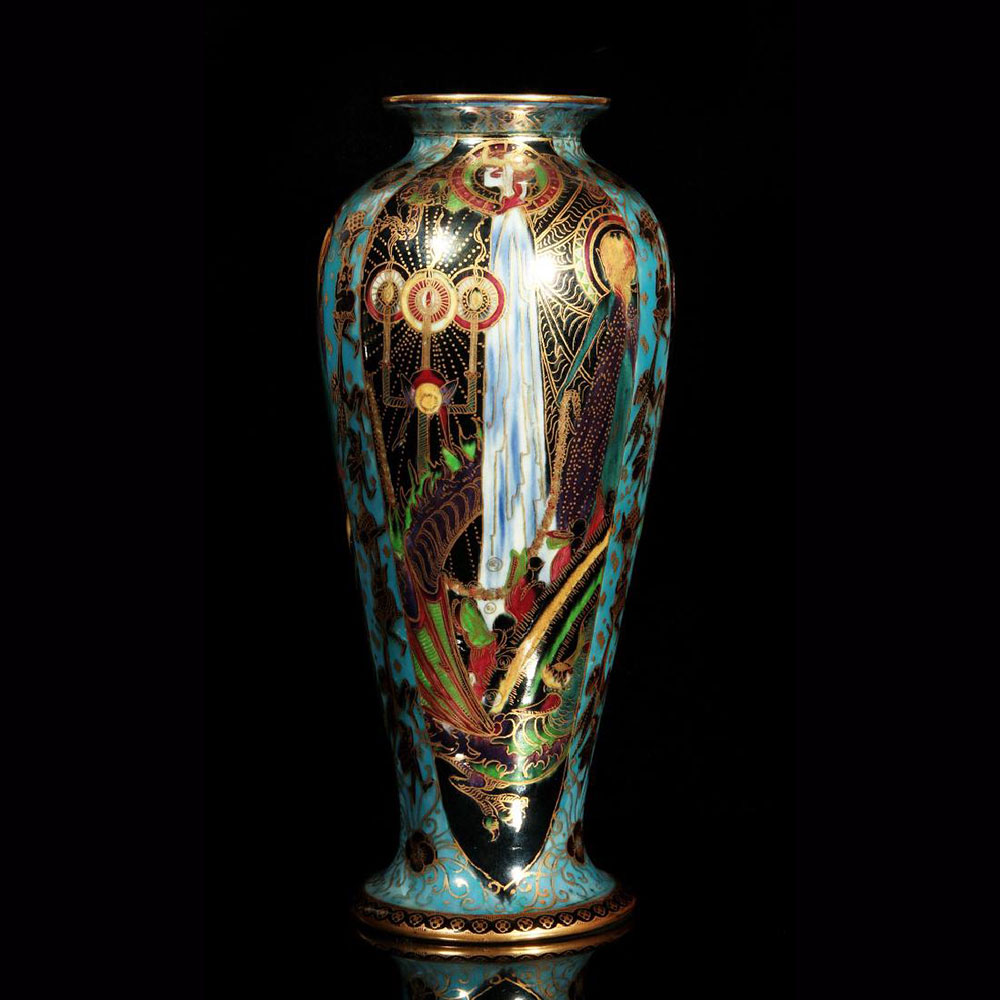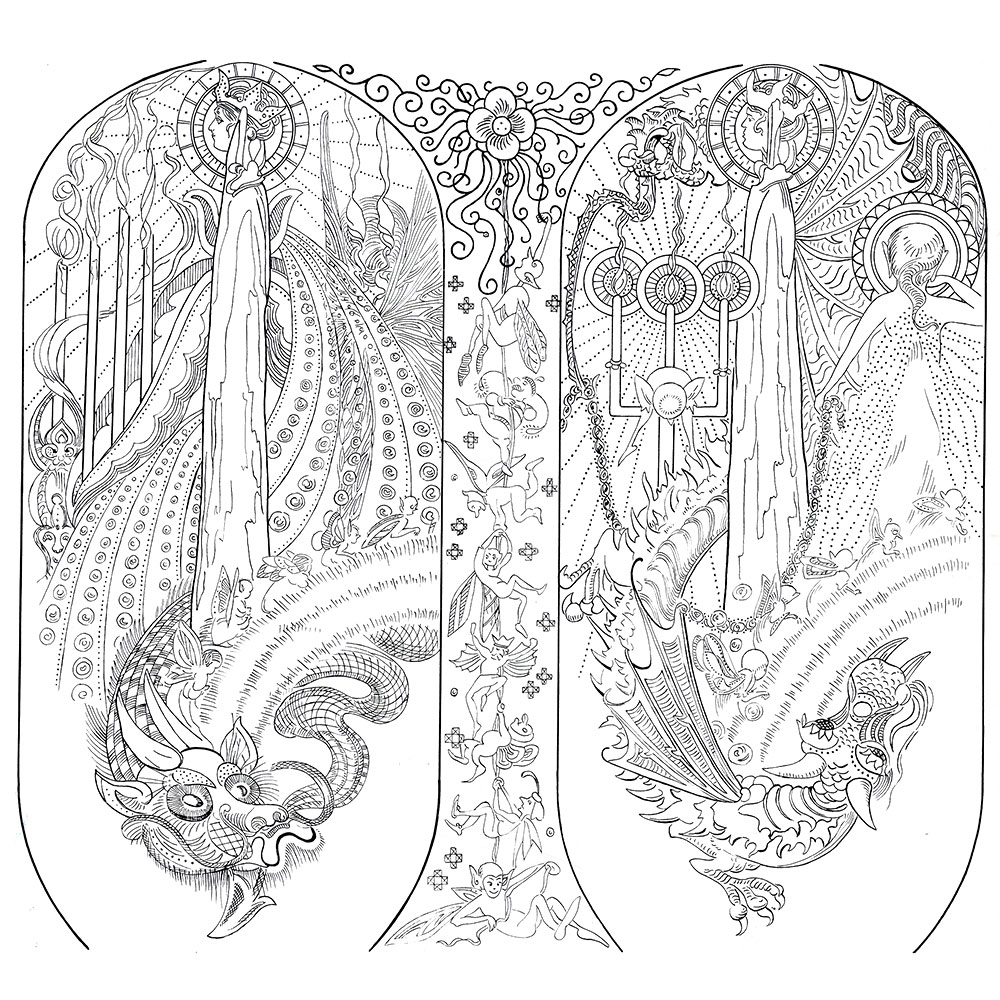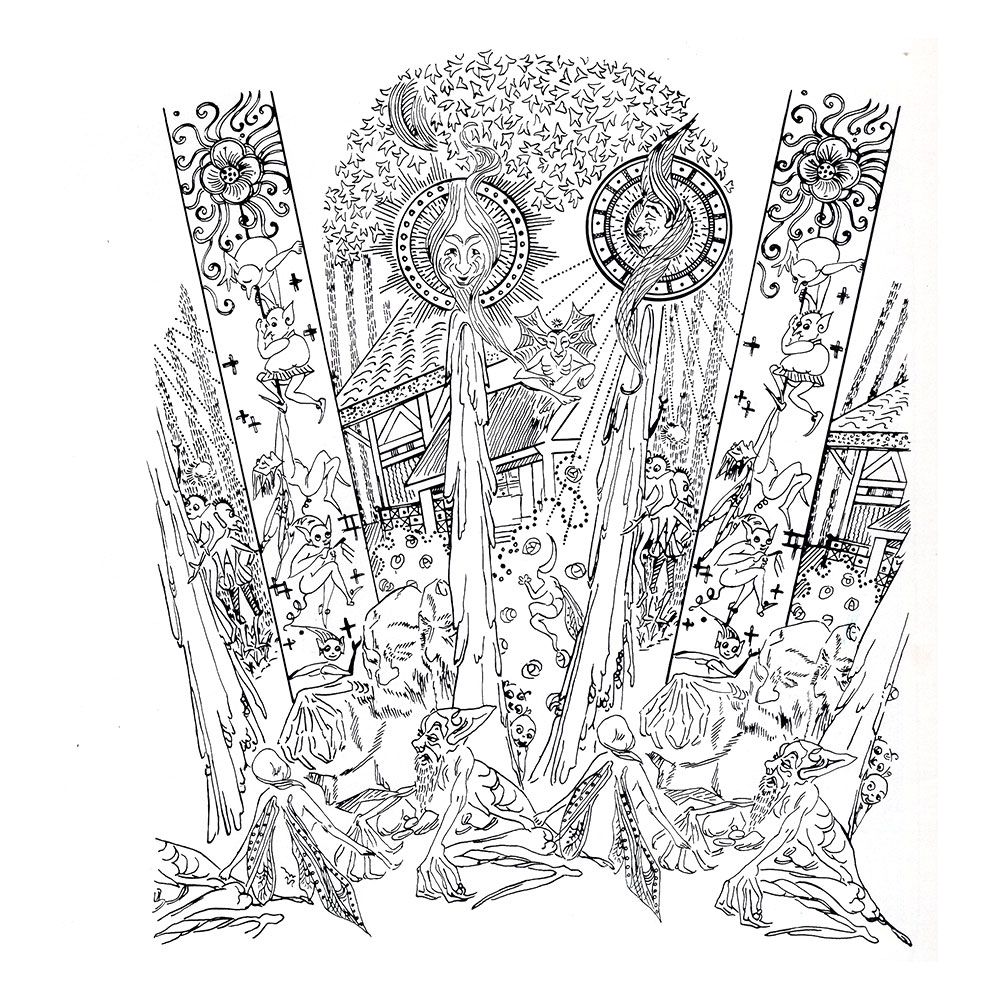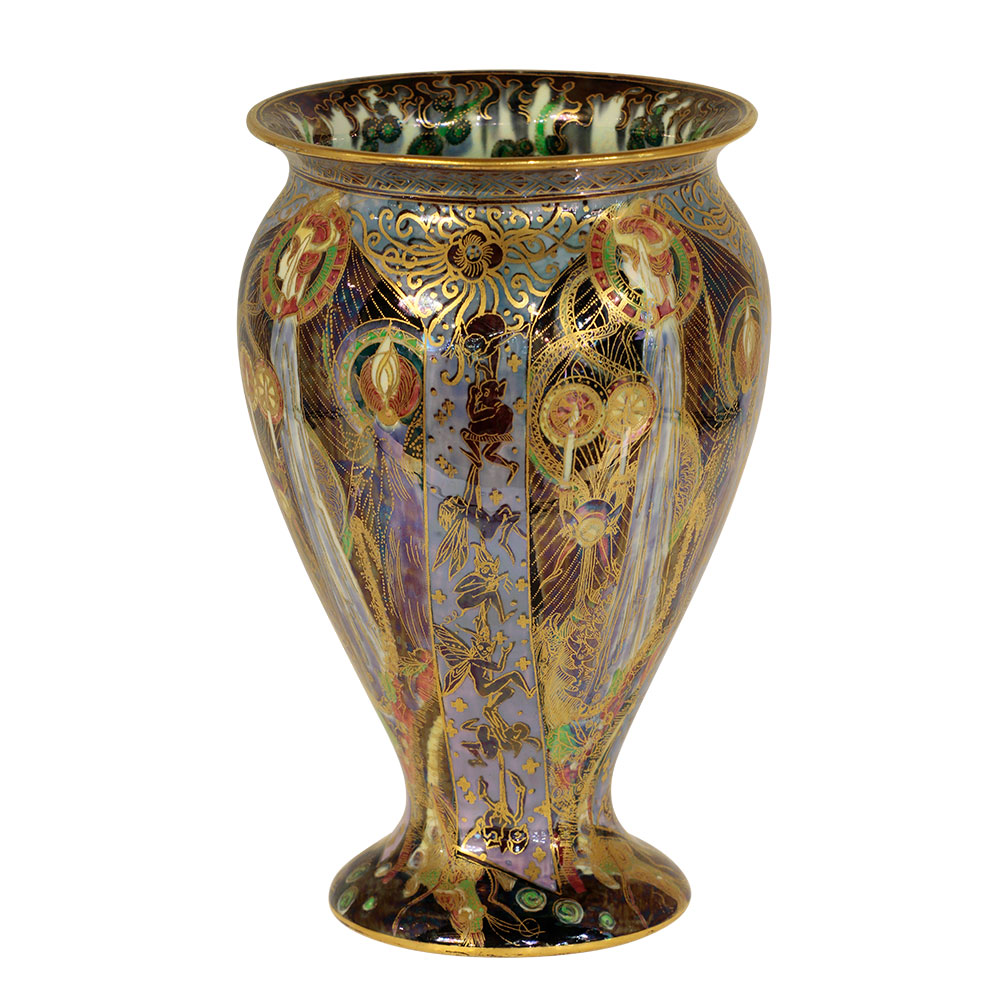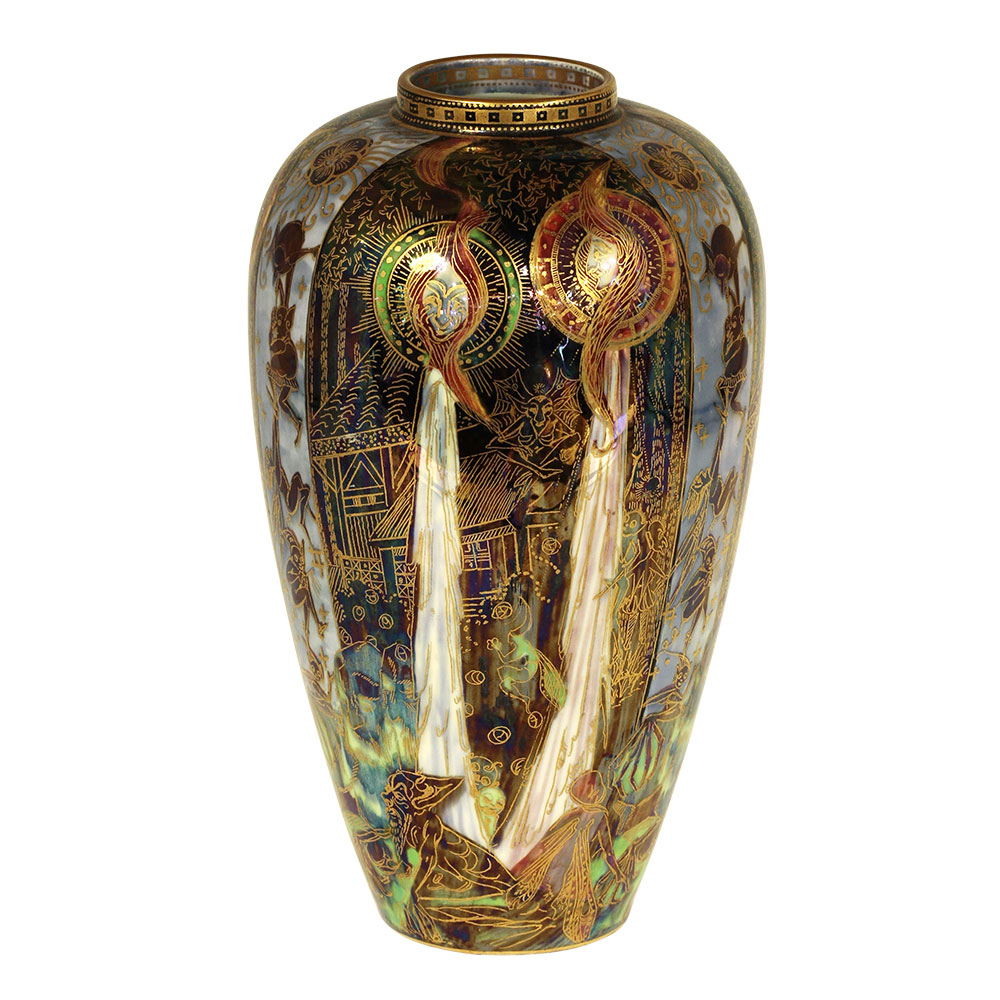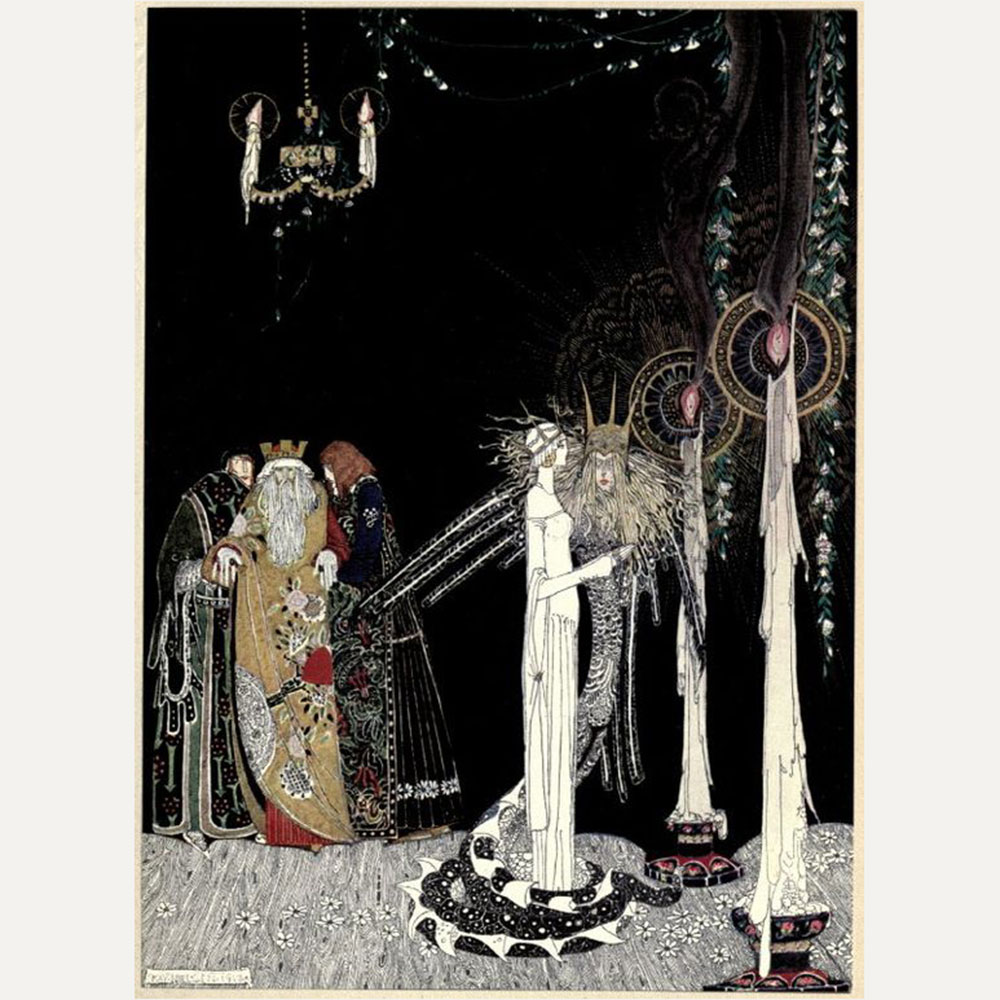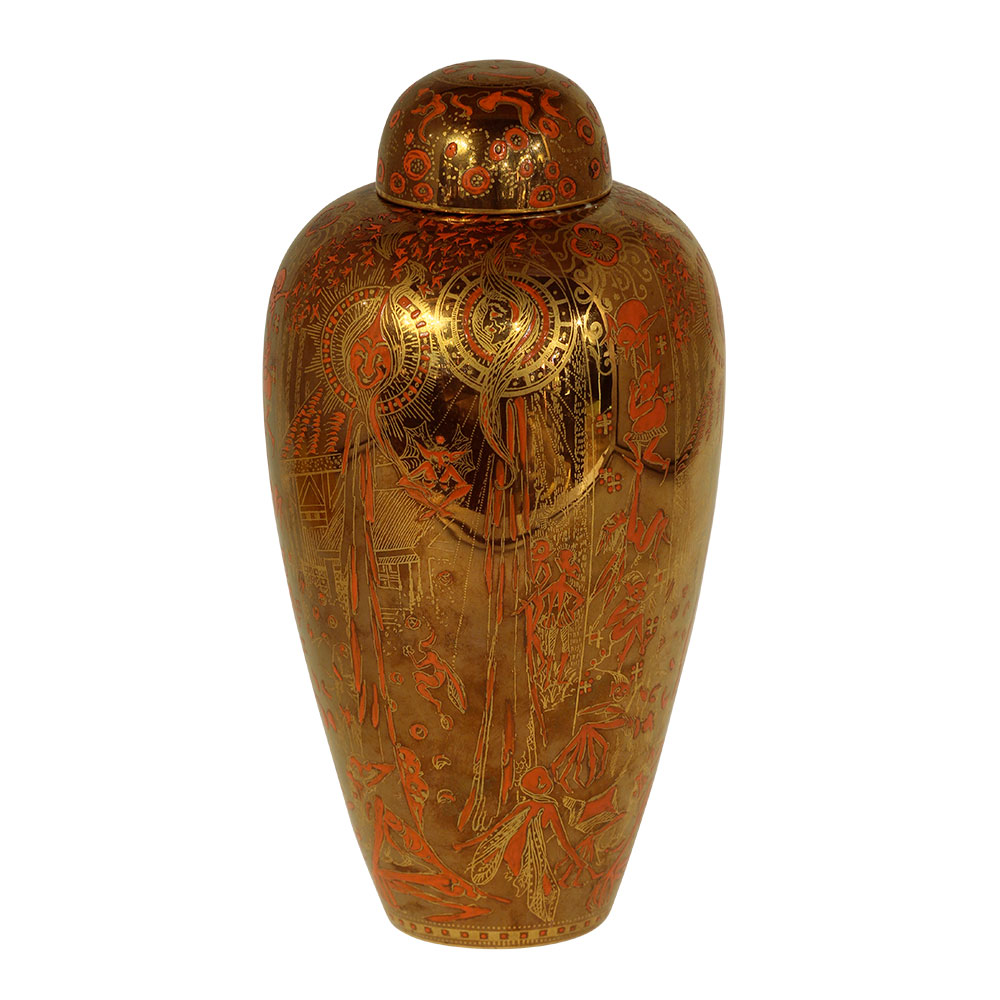The festival of Candlemas on February 2nd is a blend of pagan rites, Christian ceremonial, and popular customs. Candlemas Day marks the end of the mid-winter Christmas celebrations and was strikingly portrayed in Wedgwood’s Fairyland Lustre collection by Daisy Makeig Jones.
The Candlemas festival is derived from an ancient Roman ceremony of blessing the church candles which were then carried by the congregation in a lighted procession to protect against the devil and his minions. According to Daisy’s interpretation in her 1921 book, Some Glimpses of Fairyland, superstitious folk believed that all Christmas decorations had to be removed from the church before Candlemas or there would be a death in the community. If any leaves were left, neglectful maids would see as many goblins as leaves. Lighted candles in the home had to be extinguished with the sign of the cross or the candle grew larger and larger and the wick became a head. The haunted candle walked through the house shedding tears of wax which took a year to clean up.
Daisy’s Candlemas design was derived from an illustration by Kay Nielsen for a story in East of the Sun West of the Moon, a new edition of popular tales from the north published in 1914. Nielsen was a talented Danish book illustrator in the Art Nouveau style, who became a set designer for Walt Disney and a stylist for Fantasia from 1939 to 1941. The Candlemas designs were depicted on black Fairyland Lustre grounds with human head aureoles on some of the candles rather than flames. The design was also produced with the rare Coral and Bronze luster glaze.
In pagan tradition, this mid-winter festival of lights is called Imbolc and is a time to welcome the coming of the light with torches and bonfires and to celebrate Brigid, the Celtic maiden goddess of fire, poetry and the arts of healing. Traditionally, agricultural implements and livestock were blessed for the onset of spring. The Feast of Purification is the Christian version of this festival and marks the forty day period after the Virgin Mary gave birth to Jesus and was cleansed and able to enter the church again.
February 2nd is also Groundhog Day which is derived from a Pennsylvania Dutch superstition. If a groundhog emerges from its burrow and sees its shadow due to clear skies it will retreat back into his den and winter will persist for six more weeks. In Candlemas lore, clear weather on February 2nd, also forebodes a prolonged winter. If the weather is overcast, spring will arrive early.
